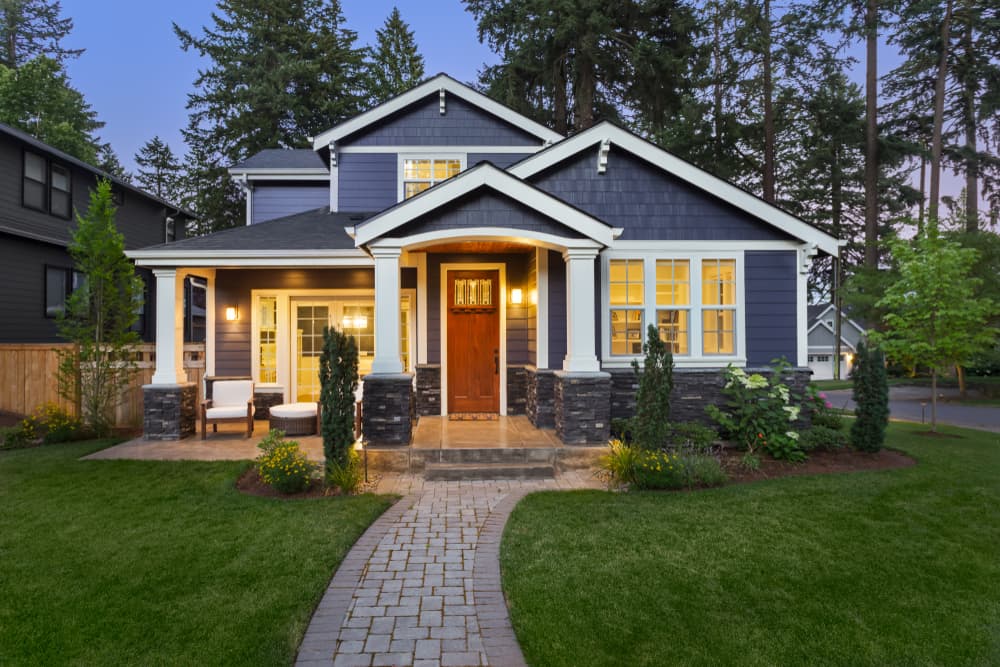
When it comes to home renovations, the devil truly is in the details. From choosing the perfect paint color to selecting the right type of flooring, every decision plays a part in the overall look and longevity of your project. One crucial detail that often sparks debate is the choice of exterior trim – wood or composite?
It may seems like most people now use composite wood, many people also call it Azek, from the brand name. It is easy to maintain, last a long time – no sanding and repainting required. But wood attracts its own audience with natural look and more eco-friendliness. While both options offer their own set of advantages, navigating the pros and cons requires careful consideration, especially when working with home renovation contractors, like us. Let’s delve into the key differences between wood and composite trim, helping you make an informed decision for your next home renovation project.
The Classic Choice: Wood Trim
Wood trim has been a popular choice for centuries, offering a timeless and natural aesthetic that complements a variety of architectural styles. Wood definitely has distinct look and texture, that make it to stand out.

Pros of Wood Trim:
- Beauty and Versatility: Wood boasts a natural warmth and comes in various species, like cedar, redwood, and pine, each with unique grain patterns and color variations. This allows for a customized look that blends seamlessly with your home’s overall design. You don’t even have to paint it white, depending on your house style you can just keep natural wooden trim.
- Workability: Wood is a dream material for skilled home renovation contractors. It’s easy to cut, shape, and mold, allowing for intricate detailing and custom profiles.
- Environmentally Friendly: Wood is a renewable resource, making it a sustainable choice for eco-conscious homeowners. However, ensure the wood comes from a responsibly managed forest.
Cons of Wood Trim:
- Maintenance Needs: Wood requires regular upkeep. It needs to be sanded, stained, or painted at regular intervals to maintain its beauty and resist moisture damage. Cape Cod is not the best place for certain types of wood, due to humidity and saltiness.
- Susceptibility to Elements: Wood is susceptible to warping, cracking, and rotting if not properly sealed and maintained. Exposure to harsh sun and moisture can accelerate this process.
- Insect Infestation: Wood can attract insects like termites and carpenter ants, posing a potential structural threat. This can also go unnoticed for some time, because, let’s face it, how often do you check your trim?
The Low-Maintenance Contender: Composite Trim
Composite trim is a relatively new player in the game, gaining popularity for its ease of use and durability. It’s typically made from a blend of wood fibers, recycled plastic, and resins.

Pros of Composite Trim:
- Low-Maintenance: Unlike wood, composite trim requires minimal maintenance. It’s resistant to moisture, warping, and insect infestation. Most composite trims come pre-finished, eliminating the need for painting or staining.
- Durability: Composite trim is incredibly durable and can withstand harsh weather conditions without deteriorating. This translates to a longer lifespan and a lower cost of ownership over time. Yes, it can get moldy, but powerwashing once in while will keep it going.
- Versatility: Composite trim comes in a wide range of colors and styles that mimic the look of natural wood. This allows you to achieve a classic wood aesthetic without the upkeep.
Cons of Composite Trim:
- Cost: Composite trim is generally more expensive upfront compared to wood. However, the lower maintenance needs can offset the initial cost in the long run.
- Workability: While composite trim can be cut and shaped, it’s not as easy to work with as wood. This might require specialized tools and techniques that experienced home renovation contractors possess.
- Aesthetics: While composite trim can mimic the look of wood, it may not have the same depth and variation in grain pattern as natural wood.
So, Which One Should You Choose?
The ultimate choice between wood and composite trim depends on your specific priorities and renovation project. Do you have a wooden house with rustic feel? Or you have a contemporary home with modern aesthetics? Sometimes you can’t even have a choice, as with historic home restoration, where there are strict guidelines on what you can and cannot do. But if you’re free to choose, here’s a breakdown to help you decide:
Choose Wood Trim If:
- You prioritize a classic, natural aesthetic with a unique wood grain.
- You have the budget and time for regular maintenance (staining, painting).
- Your project requires intricate detailing or custom profiles.
Choose Composite Trim If:
- You prioritize low-maintenance upkeep and a longer lifespan.
- Your project is on a budget and the upfront cost is a concern.
- You want a durable material resistant to moisture, warping, and insects.
Both wood and composite trim offer distinct advantages and disadvantages. By weighing the pros and cons, your priorities, and consulting with qualified home renovation contractors, you can make an informed decision and ensure your exterior trim complements your home’s beauty and durability for years to come.
At CPP Home Builders & Remodeling we are dedicated to providing you with the best home remodeling service from start to finish. Our design approach is unique and designed around the common interest in partnering with each homeowner so we can bring your vision to life, in an all-encompassing approach, one team under one roof. We can help you decide on the material and understand pros and cons of each choice.
We are ready to assist you on your next home renovation. Please feel invited to call during our normal business hours by dialing (508) 292-1562.